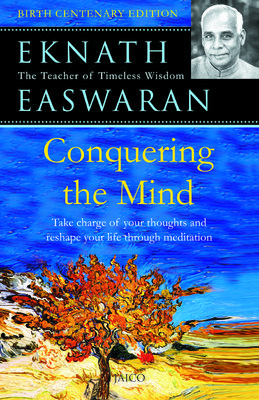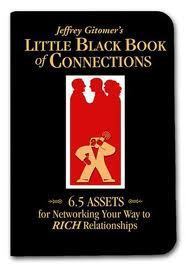Raj Shankar's Blog, page 49
June 3, 2013
Taking the Moral Ground!
Over the last few days I happened to see a bit of TV – especially the news channels. Frankly I have been advised by my guru (on life) that seeing the news and reading the papers are probably the most useless activities that you can invest your time in these days!!
life) that seeing the news and reading the papers are probably the most useless activities that you can invest your time in these days!!
Yet having seen a little bit of it regarding the IPL match fixing controversy, here is one thing that I have come to agree with. Almost no one on the TV has a moral right over anything 
One who asks for someone to resign (on moral grounds) and one who does not resign (on moral grounds) don’t seem to know or agree on what morality means. How can anyone agree on the meaning of the word morality? Can such a word have a single meaning? Isn’t it because we all don’t agree on a single definition for morality that we have all the problems in the world?
The black and white sandwiching a whole lot of shades of grey in-between, is what makes the world of our opinion. A world that is limited by the possibilities of every individual’s perception. One’s moral stand is an extension of one’s internalized value system – which unfortunately for most of us, for most of the time keeps taking positions of convenience! So before we shout for someone’s blood or defend our actions on moral grounds – let us stop to understand what we are actually mean!

June 1, 2013
Interesting Links This Week: 02-June-2013
These were the links that caught my attention this week: 
Probably one of the first list of 2013 – list of 100 most creative people of 2013. Informative and inspiring http://bit.ly/17l5v1w
When fashion goes online – this is what can happen. Liked the article for the thoughts around the power of a good idea, an insightful understanding of the customer and the marrying of technology to realise the dream http://bit.ly/184P9dP
Old is gold! And if it is 3500 years old – here is an article on sales secret that is nearly 3500 old http://bit.ly/11T23FF

May 31, 2013
Books and Me: Conquering the Mind
Book Title: Conquering the Mind
Author: Eknath Easwaran
I got introduced to Easwaran through a cousin of mine. During a particularly difficult patch in her life, she seemed to have leaned on his works for support. His eight point program appealed to me during my very first satsang. His passage meditation thinking, is an interesting one too.
Being a person who learns more by reading , I requested the Easwaran India meditation group for suggestions of his works. While I received many, two titles seem to come up more frequently. The first one was titled meditation which explains the eight point program in detail as well as the passage meditation technique. You can find my feedback on this book here. The other title was conquering the mind.
The title is very incisive. Isn’t that what we all want to achieve, even for worldly success? The mind’s qualities make it monkey like. But it is these very same qualities that make us evolve as well. So a lot depends on who controls whom. Is it the mind over us or us over the mind?
This is the perennial battle in which most of the time, the mind emerges victorious. In this context, suggestions on how we can battle and win the control over the mind is, what this book is all about. The book is filled with daily references, day to day situations that most of us face. The author after explaining what typically happens provides suggestions on how to change them.
The teachings of Buddha, seems to have influenced the author’s thinking considerably with respect to the topic. References to Buddha and his works are sprinkled all over. The book provides interesting thoughts on developing three spiritual strengths: determination / detachment and discrimination. I enjoyed that part the most. The book is an easy read filled with simple and easy to implement tips and techniques.
While I started seeing the benefit of passage meditation I realised very quickly why Easwaran insists on all the eight aspects of his program. The more we attempt to control the mind during the day the better it is during meditation. The more regular your meditation, the easier it is to attempt conquering the mind!
Happy Mindful Reading!

May 30, 2013
‘I’rony of Change
I have been having healthy discussions and thought share on this week’s Vedantic Wednesday Blog - on our approach to our  fellow human being’s shortcomings and behaviors. Surprisingly many of the discussions that I have been having touched invariably upon change in human behavior. Here is my humble take on this
fellow human being’s shortcomings and behaviors. Surprisingly many of the discussions that I have been having touched invariably upon change in human behavior. Here is my humble take on this
Whenever we seek a change in another person we always ask them to commit what they (as an individual) are going to change, what actions they are going to change, what is their responsibility towards the change, what is the plan of action etc.,. But when it comes to making changes ourselves we always conveniently use the word ‘We’! Think about it.
‘We are not able to make that change’ is a more common statement than the more honest ‘I am not able to make that change’ – because it is difficult. The problem in the statement we make is not any of the other words, but the word ‘we’. If we change that to ‘I’ and take responsibility to make changes, a lot of things will really change (in fact for the better). The trouble is we conveniently find excuses in the remaining words of the sentence.Excuses include: ‘Change’ is not clearly identified. ‘able’ – we were not provided with the necessary aids to make change happen, etc.,.
While the above reasons may all be justifiable, they are not true. This is because changes can happen only when the ‘I’ takes charge. The change can take place only when the ‘I’ decides to change things one at a time. It is difficult even if you decide to make four changes in your day and try to turn that into a habit. Tough!
But do the same one at a time and you will find that the second, third and fourth changes get easier when the first and the earlier changes have been turned into habits.
Change is a tough call but change we must. Don’t just think about it – Do it!

May 29, 2013
Risks of Corporate Shopping
Recently we saw Ms Marissa Mayer of Yahoo go on a shopping spree – buying tumblr for a billion dollars and another gaming  company for an undisclosed sum. So what is she buying for Yahoo?
company for an undisclosed sum. So what is she buying for Yahoo?
Once upon a time CEOs would go out and buy factories, products, teams, etc.,. Most of them were hard assets or at least something that could be felt. You knew what you were buying into and what you could do with them in almost all the cases. There was also some possibility of selling them off, in case the acquisition does not result in what was expected.
But as the trend continued, we saw companies buying brands, intellectual property, and customer bases, sometimes to buy revenue, and many times to kill the product that was eating into their primary sale. While the assets were becoming more intangible – the potential worth justifying their purchase costs were getting more difficult to justify.
These days you see purchases being made on traffic and engagement. If a website has routine visitors or a high number of unique visitors, then it is becoming an acquisition target. While there have been successful acquisitions by Google and Ebay, will the growing valuations provide their buyers adequate returns before the attention deficit syndrome kicks in and moves the web-citizens to move on to newer properties? The longevity of investments in the online world assets is like perishables (airlines seats or fruits) – so it will be useful for cash rich companies to be wise in spending their money.
While only history will show whether the acquisitions have been useful or not – the risk of making hard cash evaporate into thin air is just getting higher! Did we not hear that the planet is getting warmer?
Think about it…

May 28, 2013
Vedantic Wednesday: Approach to Building an Ecosystem
In general I have observed that there are only two ways to live (at least that’s how the majority of us live): 
(a) Correcting others: by finding fault in others
(b) Comforting others: by finding right in others
While it looks very misleading and banal for this to deserve a write-up, a slightly deeper look exposes a serious impact on us.
When we live by constantly identifying and / or highlighting faults or shortcomings in others, it has an impact on us as well. Just observe yourself the next time you criticize another person (especially someone close to you); and you will realize that it hurts you, destabilizes your calmness and increases your rate of breath, etc.,.
On the other hand when we constantly find even a little bit of good in others and highlight it, it enhances our calmness and makes us feel good for a few minutes. This is in fact the result of having produced a smile on another person.
Every one of us has flaws and we keep committing errors all the time. As the errors are not physically damaging and hence we do not recognize them and feel for them. However what is actually happening is that there is a greater hurt being produced mentally / emotionally. And though this is not very visible immediately, it haunts us for a longer time.
Hence it is a great habit to cultivate – the habit of finding and appreciating something good in the behavior or actions of another person. And the best part is that by producing that moment of pleasure in the other person’s life, we are also enhancing our own life.
Isn’t this an important aspect of healthy living? Isn’t this useful in building organizations as well?
Imagine having a group of people who love running to office in the morning because they can meet you! No, it is not a utopian dream – it is the way great organizations were built.
Small changes to how we live in our ecosystem can have a huge bearing on the ecosystem and for those who comprise it!
Think about it!


May 27, 2013
How well do you know your TM?
No I don’t mean Trade Mark!! I was referring to a much more important and serious term for entrepreneurs – Target Market!
Most entrepreneurs I meet seem to know that they have a target market (a very large one) or target markets (number of little ones). The conversation around this however becomes cold when we sit to discuss and define it. As we sit over a set of questions, we find many questions are difficult to answer (some of them have no specific answers at all). Here are some of them:
- Who is that ideal customer you would like to meet everyday?
- Where are they located?
- How many of them do you need to make good your annual plan?
- Do I have a list of 10x potential customers list (x denotes number of customers you need to sign business with)?
- Is there current capacity of servicing before you need more resources? How does this affect definition of target market?
This is only a sample!
What I find strange is that most entrepreneurs understand and appreciate the importance of these aspects – but something other than this keeps them busy.
When entrepreneurs don’t have enough time on their table to spend discussing customers and markets – the business is heading for trouble.
Think about it!!

May 25, 2013
Interesting Links This Week: 26-May-2013
Here are the links that got my attention this week:
How to measure knowledge worker productivity? A perennial debate that is on since sometime now. With the discussion some essential facts are getting established. http://bit.ly/144hPP9
Wharton 2013 B Plan Competition shows some signs of emerging sectors with entrepreneurial opportunities. http://bit.ly/10bJoWT
“If you tell me who your heroes are, I’ll tell you how you’ll turn out.” -@WarrenBuffett hands out career advice: http://t.co/jzF24JT8cV

May 24, 2013
Books and Me: Little Black Book Of Connections
Book Title: Little Black Book Of Connections
In today’s fast paced society, every attempt is made by every person to hasten their achievements as well as the speed at which they are achieved. Undoubtedly one aspect that almost always receives debatable views when it comes to this is networking. While everyone without exception accepts the fact that who you know is very important in business, what gets debated, discussed, criticized and recommended is the modus operandi around how you get to know someone and stay connected with them.
In today’s increasingly inter-networked world, various versions of the idea of six degrees of separation are floating around. It is not difficult today to reach even people who would have been impossible to even think of a few years ago. But at the same time as access gets democratized it is becoming increasingly difficult to gain the attention of people we meet and even more difficult to keep them engaged, so as to have the possibility of a relationship. Be it individuals or corporation, everyone is struggling to create sustain, nurture and enhance the relationships for their overall benefit.
Jeffrey Gitomer’s books in general are a pleasure to see, feel and read. They are differently made, differently structured and differently presented. In a way, it is reflective of the author’s thought process and style. And this one is no exception. Also coming from the domain of sales Jeffrey Gitomer is rightly placed to share thoughts on this subject. The book questions some of the fundamental myths around relationships as well as the art of making connections.
The book is not an off the shelf solution. The book is not a quick fix. In today’s business problems, the book is more like a sounding board which brings up numerous thoughts about the basic aspects of human relationships. It has a lot of questions scattered all over which serve as a good self evaluation and self guiding tool-kit. Sprinkled through the book are some fundamental truths, interesting quotes , book recommendations, cartoon humor and cases. All these make the book an easy and enjoyable read.
The author also presents tips and tricks, secrets, good practices and some fundamental knowledge which will definitely strengthen our understanding and approach of networking. The book is well structured to provide thoughts on what is networking, why network, how to network, where to network and how to keep the network going.
One reason that forms the underlying philosophy of the book makes the case it presents very strong. The book states the fundamental basis of networking starts by having something to offer and giving it happily to kick-start the process of networking. I enjoyed reading the book as it is also a subject that is close to my heart. It is a book that will appeal to almost anyone, anyone who wants to live and succeed in this undeniably networked era!

May 22, 2013
After Sparrows – What next?
I decided to walk to purchase some items for my mom last evening. It was a walk of about 20  minutes to the store from where things had to be bought. Since the main roads were all under construction work for an upcoming public transport system, I decided to take the by lanes of one of the planned areas of the city. I realized pretty soon that more than a walk, it resembled an obstacle race. I had to jump over, side-step, walk on piles of sand, stone and avoid machinery (not traffic), as many houses were undergoing reconstruction.
minutes to the store from where things had to be bought. Since the main roads were all under construction work for an upcoming public transport system, I decided to take the by lanes of one of the planned areas of the city. I realized pretty soon that more than a walk, it resembled an obstacle race. I had to jump over, side-step, walk on piles of sand, stone and avoid machinery (not traffic), as many houses were undergoing reconstruction.
Some houses were being converted into shops and some even into little clinics. While there is talk almost everywhere about slowdown of business, cash flow problems, etc.,. Construction activities seem to be in full swing. Especially private work! The roads are all full of vehicles, sand, bricks, etc.,. Almost all the space outside of the plot where the construction is happening is being used for storage. I am not really complaining (maybe I am – and rightfully so).
As I walked through this flurry of activities, I noticed especially with re-constructed building, people were extending their houses wall to wall. Any free space between two houses is eaten up by that extra space for a room. You can hand over things across two houses even without stepping out. At times, even sunlight cannot penetrate the gap between the two buildings.
We have long ago driven the sparrows out. I wonder which would be the next one to go? What are we actually trading in the name of bigger living space – the very space that we need to live? I know the answers are neither simple nor straight. This could be the price we are paying for economic and social development. But I can’t help wondering if we are at the top of the giant-wheel, where the next phase is the long descent?





